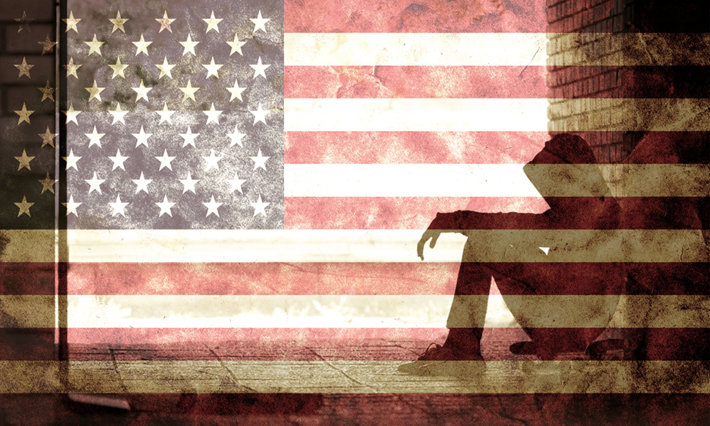Top Priorities for Reducing the American Addiction Epidemic

Drug and alcohol addiction is said by some to be the bane of our health in 21st-century America. And that’s not far off the mark either. Most of us who have already seen some of the statistics or who have even been themselves personally affected by this growing problem can attest that addiction is more than a little bit cataclysmic.
The epidemic of substance abuse is certainly one of the most grueling, vicious health problems of our time, a capturing and difficult physical and mental health issue that causes all but untold strife and hardship for tens of millions of Americans. Research indicates that the drug problem has grown considerably, just about every year, for almost two decades in a row. This is a problem to address, a problem where we need to prioritize methods for its reduction.
The Scope of Addiction in America Today
According to research done by the National Institute on Drug Abuse, our nation’s population of drug users and alcohol users has grown considerably, tripling from around eight million users at the turn of the century to well over twenty-four million users by the end of last year. And it has not only been a problem of growth in the number of Americans who are addicted. It has also been a problem of increasing deaths amongst those who use drugs and alcohol.
Take a look at the following five valuable pieces of data, quoted directly from credible sources mentioned at the end of each quote and also cited in the article footnotes:
“North America continues to experience the highest drug-related mortality rate in the world, accounting for 1-in-4 drug-related deaths globally.”
(The United Nations Office on Drugs and Crime)
“In January 2017, the Center for Disease Control has estimated that the number of people in the U.S.A. who had died from an overdose in the 12-month period prior to January 2017 was 64,070.”
(The Center for Disease Control and Prevention)
“Among the more than 72,000 drug overdose deaths estimated in 2017, the sharpest increase occurred among deaths related to fentanyl and fentanyl analogs (synthetic opioids) with nearly 30,000 overdose deaths.”
(The Centre for Disease Control and Prevention)
“59,000 to 65,000 people died of overdoses last year (2017). In comparison, more than 58,000 U.S. soldiers died in the entire Vietnam War, nearly 55,000 Americans died of car crashes at the peak of such deaths in 1972, more than 43,000 died due to HIV/AIDS during that epidemic’s peak in 1995, and nearly 40,000 died of guns during the peak of those deaths in 1993.”
(The Times and Vox)
“According to preliminary data from the Centers for Disease Control and Prevention, more than 72,000 people in the U.S. are predicted to have died from drug overdoses in 2017—nearly 200 a day. That’s up from 2016, which was already a record year in which roughly 64,000 people in the U.S. died from overdoses. At least two-thirds of drug overdose deaths in 2016 and 2017 were linked to opioids.”
(The Centers for Disease Control and Prevention and Vox).
Five quotes. Five paragraphs. The above data can be read and understood in under two minutes, but it gives the reader a lifetime of perspective in just how dangerous and risky our current addiction crisis has become. We are struggling with a mass epidemic, one that requires several strategies to contend with.
Strategies for Reducing the Prevalence of Addiction Across the U.S.

We need strategy, organized plans and programs across many areas, all that have the reduction of drug use and alcoholism as the primary backbone for addressing our nation’s substance abuse epidemic. Getting a handle on a problem as significant as the one referenced in the above statistics will be tricky, which is why we need to utilize multiple strategies.
Some of the approaches we need to work on are things that we can all start working on today. Some have a longer runway. Listed below are five areas that could stand to use some improvement:
- Prevention. Prevention is probably the single most prominent tool that we have for slowing down the growth of the addiction epidemic. Prevention is defined as any effort or area that seeks to stop drug problems from forming before they even form. It’s absolutely a worthwhile effort because prevention slows and eventually stops drug problems from cropping up in certain areas.
- Education. At the end of the day, tens of millions of Americans simply do not know enough about drugs and alcohol addiction. When people know this subject well, they tend to stay away from drug use and alcohol misuse. The Substance Abuse and Mental Health Services Administration even estimates that risks for drug use drop by four-hundred percent when people know what is at risk. This includes education those who are taking prescription meds on how to safely store and dispose of them.
- Rehabilitation. Of course, those who are addicted to drugs and alcohol need to get help with their habits, and that help comes in the form of addiction treatment. Twenty-four million Americans are not going to overcome drug problems on their own. It’s just not going to happen. They need help, and that help is provided to them with the assistance of addiction treatment centers.
- Remove Addictive Pharmaceuticals from Daily Consumption. Addictive pharmaceuticals (like painkillers and psychotropics) often end up causing more problems than they end up alleviating. We need to find holistic and natural alternatives that do not pose such serious risk for addiction and other negative health complications.
- Address Foreign Diplomacy with Countries that Traffic Drugs. At the time of this writing, the vast majority of the narcotic and addictive drugs that are being used amongst the American people do not actually come from the U.S. Mexico and China are the top traffickers of illegal drugs and illicit pharmaceuticals into the U.S. Taking a heavy-handed law enforcement approach with our border and ports of call has not been that workable, so it might be time to increase diplomatic efforts with these nations to reduce trafficking issues.
Much could be done to reduce the drug problem. It’s time to create some movement in the above areas and more. The focus has to be on utilizing multiplestrategies and avenues so we can canvas multiple areas of drug crisis all at once.
A Brighter Future Ahead

We can make a significant change in reducing the U.S. drug problem as it stands today. We can be the change that we need to be, all with the purposes of overcoming addiction and creating a better present, and a better future.
It’s going to take work. It’s going to take a lot of effort on our part and on the part of the generations that follow. But the end goal of a society that is free of drug and alcohol addiction and all of the troubles that follow along with such afflictions is absolutely worth that effort. It might take some time before change begins to manifest. But we have to remember that we are working to create a future that is free of an addiction epidemic. But such a utopia of drug-free living down the road is absolutely worth our effort and commitment today.
Sources:


 ®
®